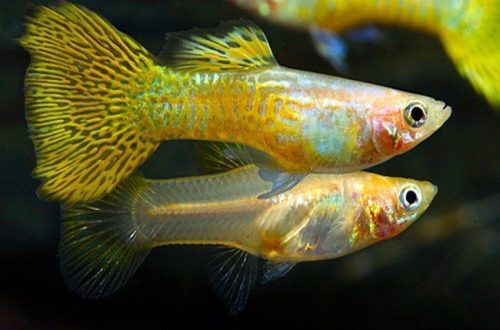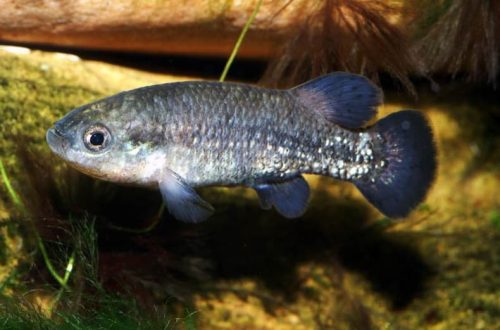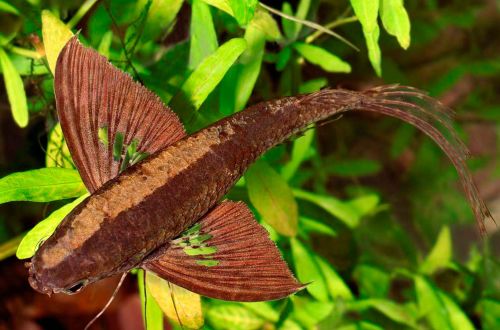
Pecilia sunset
Pecilia Sunset or Pecilia Solar, the English trade name Platy Sunset, translated into Russian means “sunset”. For breeders, the analogy with the sunset has developed due to a characteristic feature in color – a gradient transition in body color from bright yellow to red. Sometimes there are black spots.

The fish is a selective color variety from the common Pecilia. Does not occur in nature. It is often confused with the Yellow (Golden) Pecilia, which can be distinguished by its solid, uniform color without red transitions.
Brief information:
- The volume of the aquarium – from 60 liters.
- Temperature – 20-28°C
- Value pH — 7.0–8.2
- Water hardness – medium to high hardness (10-30 GH)
- Substrate type – any
- Lighting – moderate or bright
- Brackish water – acceptable at a concentration of 5-10 grams per liter of water
- Water movement – light or moderate
- The size of the fish is 5-7 cm (without a brush on the tail).
- Nutrition – any food with herbal supplements
- Temperament – peaceful
- Content alone, in pairs or in a group
Maintenance and care

It is considered easy to keep and unpretentious fish. Optimal living conditions can be provided in a relatively small aquarium from 50–60 liters with shelters in the form of thickets of plants or other natural / artificial decoration elements. Pecilia sunflower thrives in a wide range of temperatures and pH and GH values.
Water quality is largely dependent on the smooth operation of the filtration system and the amount of feed supplied. A common mistake beginner aquarists make is overfeeding fish. Uneaten food leads to water pollution. To avoid this, it is recommended to feed the amount of food eaten within five minutes.

What to feed? A good choice would be food made specifically for Pecilia, produced by many manufacturers. Such products will provide a balanced diet and take into account the needs of fish in herbal supplements. As a supplement, you can use live or frozen brine shrimp, bloodworms, daphnia and other small invertebrates.
Breeding / breeding
In favorable conditions, they are able to give offspring regularly. Pecilia Sunset does not lay eggs, but gives birth to fully formed fry. The fish do not show parental care and, on occasion, will certainly eat their own juveniles. In an aquarium with dense growths of aquatic plants, fry will find a place to hide and many will survive to adulthood. If you plan to keep the entire brood, then it will need to be transplanted into a separate tank.





